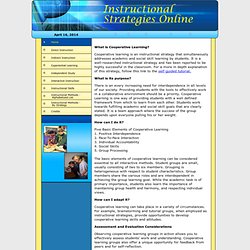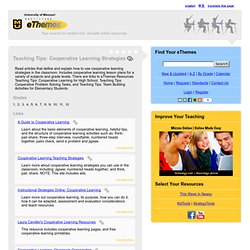

Top 10 Do’s and Don’ts When Flipping Your Classroom #edchat. Produce material for YOUR students to engage them outside the classroom.

Generic content works as a starting point but students have greater faith in their own teacher’s input.Decide on a workflow solution and stick to it. I use Edmodo to set assignments and annotate responses. Students are happy with this solution as it is cross platform and supports learning with library and backpack resources.Set specific deadlines for your students. If they are given a date then unfortunately that can be construed as midnight!! The old hand-in mantra of next lesson doesn’t fit the ‘flipped‘ class idea and as such can present a problem.Provide access for students who aren’t connected to the internet at home. Expect students to watch/read your material just because you tell them to. This post is in response to the success we have had with workflow and assessment for learning this academic year. Please contact me if you would like to discuss the ‘flipped’ class as I am very keen to hear any new ideas.
Cooperative Learning. Definition Cooperative learning consists of instructional techniques that require positive interdependence between learners in order for learning to occur.

Basic Elements Research shows that both competitive and cooperative interaction are a healthy part of a child’s repertoire of behavior. By second grade, however, urban children have effectively extinguished their cooperative behavior and persist in competition, even when it’s counterproductive. By developing deliberately cooperative techniques, educators aim to correct the unconscious societal and educational bias that favors competition.
Cooperative Learning Techniques. Cooperative Learning. What is Cooperative Learning?

Cooperative learning is an instructional strategy that simultaneously addresses academic and social skill learning by students. It is a well-researched instructional strategy and has been reported to be highly successful in the classroom. For a more in depth explanation of this strategy, follow this link to the self-guided tutorial. What is its purpose? There is an every increasing need for interdependence in all levels of our society. How can I do it? Cooperative Learning Strategies. Global rating average: 0.0 out of 50.00.00.00.00.0.

Socratic Questioning. Techniques > Questioning > Socratic Questions Conceptual | Assumptions | Rationale | Viewpoint | Implications | Question | See also Socrates was one of the greatest educators who taught by asking questions and thus drawing out answers from his pupils ('ex duco', means to 'lead out', which is the root of 'education').

Sadly, he martyred himself by drinking hemlock rather than compromise his principles. Bold, but not a good survival strategy. But then he lived very frugally and was known for his eccentricity. Here are the six types of questions that Socrates asked his pupils. The overall purpose of Socratic questioning, is to challenge accuracy and completeness of thinking in a way that acts to move people towards their ultimate goal. Conceptual clarification questions Get them to think more about what exactly they are asking or thinking about.
Why are you saying that? Probing assumptions What else could we assume? Probing rationale, reasons and evidence. Reciprocal Teaching: A Reading Comprehension Package. The intervention package teaches students to use reading comprehension strategies independently, including text prediction, summarization,question generation, and clarification of unknown or unclear content.

For effective-teaching tips to use when introducing this strategy, consult the guidelines presented introducing Academic Strategies to Students: A Direct-Instruction Approach. Materials: Overhead transparencies of practice reading passages, transparency markers Student copies of Be a Careful Reader!
Preparation: Prepare overheads of sample passages. Step 1: Set aside at least four successive instructional days to introduce students to each of the following comprehension strategies: Day 1: Prediction,Day 2: Summarization ("list main ideas"),Day 3: Question Generation,Day 4: Clarifying. Step 2: After students have been introduced to the key strategies, the group is now ready to apply all four strategies from the Reciprocal Teaching package to a sample reading passage.
Jim's Hints. Reciprocal Teaching Resources. Document Based Questions. Www.metproject.org/downloads/MET_Gathering_Feedback_Practioner_Brief.pdf. What Works in Classroom Instruction - McREL. Enhancing Collaborative Distance Learning through Wiki and Cognitiv... Free online mind mapping software.
Mind Mapping Methods. 5 Innovative Mind-Mapping Tools For Education. What do you do when you have an elaborate project, assignment, or paper that needs to be quickly organized? Do you fire up Microsoft Word and whip up an outline? Do you pull out a pen and paper and start sketching? What if you could have the best of both options with a free online tool? It’s called ‘mind mapping’ (“Mind Map” is a trademark of the Buzan Organization .) and it’s basically a fun and intuitive way to visually organize your thoughts. Thanks to a recent article , I received an influx of mind-mapping web tools that I wanted to pass along to the Edudemic audience. XMind Definitely one of the easiest ways to embed a mind map into your blog or website.
The biggest feature to me is the ‘Pro’ feature which lets you record what an audience (or your classroom) says directly into the mind map as an .mp3. MindMeister.